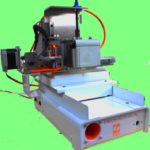Teschler on Topic
Leland Teschler • Executive Editor
[email protected]
On Twitter @ DW_LeeTeschler
You’ll frequently find pundits today equating engineering with innovation. Typical observations: “The foundation of a nation’s common innovation infrastructure is its pool of scientists and engineers available to contribute to innovation throughout the economy,” from Harvard Business School Professor Michael Porter and M.I.T. Professor Scott Stern. “We cannot engineer solutions for the nation’s toughest problems without innovation,” says U.S. Army Corps of Engineers chief scientist David Pittman.
These viewpoints ignore one salient fact: Most engineers are engaged in maintenance rather than innovation. So points out David Edgerton, a professor at Imperial College London and founder of the Centre  for the History of Science, Technology and Medicine. The image of the professional engineer as a creator and reformer is misleading, he says. Only a small minority of engineers are concerned with design and development, even among the most academically trained.
for the History of Science, Technology and Medicine. The image of the professional engineer as a creator and reformer is misleading, he says. Only a small minority of engineers are concerned with design and development, even among the most academically trained.
A study done in the 1980s put the tasks of the average engineer into perspective. A survey of professional Swedish engineers back then found that 72% of them worked maintaining and supervising existing entities. Indications are that things haven’t changed much in the intervening decades. Estimates by the U.S. National Bureau of Labor Statistics are that less than 4% of today’s engineers are engaged in research.
Nevertheless, you don’t hear much about engineers working in maintenance because that role doesn’t fit the image the profession likes to project. “Professional engineers don’t relish the association made between the engineer, the oily rag and the spanner, tools of the maintenance man,” says Edgerton. “In recent times engineers have stressed their role in innovation, design and the creation of new things. Engineers, in this view, are concerned above all with the future; they are optimistic and progressive; they send new things out into the world.”
The tendency to downplay the role of engineers in maintenance probably has its roots in culture. For example, professional engineers loathe the idea of calling IT repair personnel at the local electronic store “engineers.” Understandably, nobody who has poured their blood, sweat and tears into an engineering degree wants to be conflated with junior-college-educated technicians.
But there are countries outside the U.S. where engineers predominantly engaged in maintenance have plenty of clout. Perhaps the primary example comes from France where State Public Works Engineering Corps (Ingénieurs des Travaux Publics de l’Etat (ITPE)) civil servants work for the Government of France. Its members are mainly employed as team or project managers overseeing areas such as infrastructure, environment, transportation, and energy. ITPE engineers supervise and manage public policies requiring technical and scientific skills and work in areas far beyond traditional public works. Their responsibilities can include sustainable development and managing natural and technological risks, IT and big data, and biodiversity.
Another interesting point about ITPE engineers: None of them have student loans to worry about. Most ITPE engineers are recruited during high school by taking a competitive examination in mathematics, physics, and engineering. Those accepted go to college for three years as paid civil servants in training. Then they spend a year in a professional internship. After graduation, they either go directly to work or do an additional year of specialized study which lets them occupy positions requiring specific technical skills.
The concept of an elite band of state-employed maintenance engineers may be catching on. Greece, Mexico, and Spain have similar positions. And evidence is these engineers have a fair amount of political prestige: Former President of France Valéry Giscard d’Estaing was a once a maintenance engineer. DW
You may also like:
Filed Under: NEWS • PROFILES • EDITORIALS, Commentaries • insights • Technical thinking










